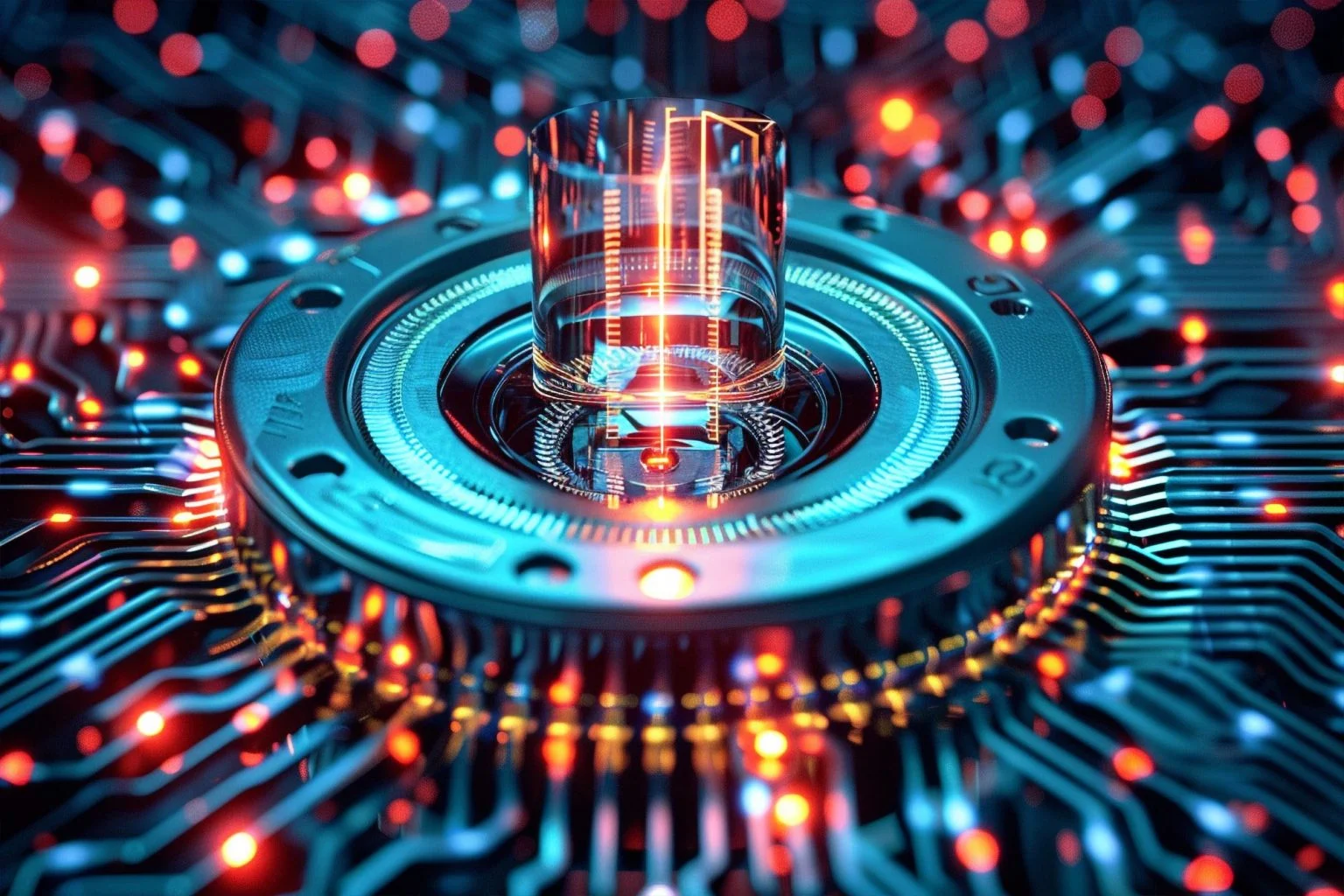"Researchers have pioneered a photon-based qubit communication model, facilitating precise control in quantum computing information transfer. Credit: SciTechDaily.com" (ScitechDaily, Quantum Computing Breakthrough: Photons That Make Quantum Bits “Fly”)
"This illustration shows electric current being pumped into platinum (the bottom slab), which results in the creation of an electron spin current that switches the magnetic state of the 2D ferromagnet on top. The colored spheres represent the atoms in the 2D material. Credit: Courtesy of the researchers." (ScitechDaily, MIT’s Electron Spin Magic Sparks Computing Evolution)
The new qubits can fly.
The new type of quantum communication system that can use technology that makes qubits more effective is the system that makes photons or photonic qubits fly. Quantum systems are more secure than traditional computers because quantum computers can store information in a physical particle. The problem with quantum computers is that they are much more sensitive to outcoming radiation than regular computers.
The thing. That made researchers make quantum computers was effect, called superposition. In particle accelerates photons sometimes double themselves. The thing is that photons cannot form from emptiness, and the reason for those doubling photons is that photon pushes some kind of electromagnetic field. There is a forming wave in that field, and we see that wave as photons.
The quantum computer uses quantum entanglement for information transfer. The quantum computer loads information into a photon. And then it creates quantum entanglement between this photon and another photon. After that the information starts to flow from the sending photon to the lower energy, receiving photon.
"Altermagnets, a newly discovered class of materials, show great potential for spin-based electronics due to their unique magnetic properties. (Artist’s concept.) Credit: SciTechDaily.com" (ScitechDaily, Unlocking the Secrets of Altermagnets in Spin-Based Electronics)
To make information travel from higher to lower energy photons. The system must create a perfect copy of the transmitting photon. Then the system creates quantum entanglement between those photons. The higher energy photon is larger than the lower energy photon.
When radiation hits the larger photon, it forms an electromagnetic shadow on the other side. Then that photon's power field starts to stretch and when it touches the lower energy photon's energy field, it starts to send oscillation to that lower energy energy field.
The problem is that long-distance quantum entanglements are hard to make. They require high energy levels. And things like electromagnetic radiation can destroy information in the quantum entanglement. Another way is to store data in the qubit or single photon and send that photon to the receiver of the message. There the system can raise this photon's energy level higher than the receiver's. Then the system can resend the information to the receiver.
"Mid-infrared light reduces the fluctuations of octahedral rotations in SrTiO3, allowing the material to transform into a ferroelectric state by shifting the central titanium ion either up or down. Credit: Jörg Harms, MPSD" (ScitechDaily, Physicists Unlock the Secrets of Light-Induced Ferroelectricity in Quantum Materials)
Altermagnetism, new 2D materials, and quantum materials are the next big step in microelectronics.
Altermagnetism is a fascinating tool for researchers when they make microelectronics. The altermagnetism is the magnetism that doesn't form a magnetic field around the wire. And that thing makes it possible to develop new and small-size microelectronic products. Altermagnetic systems can help to keep the microchip's temperature low because there are no crossing magnetic fields. That system is one of the most promising things in computing.
Another thing that gives interesting results for microchip engineering is photon-controlled ferromagnetism. The idea is that light can adjust the ferromagnetic phenomenon turning position of ferromagnetic crystals. Or the system can adjust the magnetic layer's temperature.
When attosecond lasers adjust a ferromagnetic crystal's temperature or position, that system can make very high-accurately controlled magnetic fields. If researchers combine these altermagnetic- and ferromagnetic structures, that allows the system can create a highly accurate magnetic field.
The altermagnetic structures are the next-generation tools for spin-based electronics. The altermagnetic structures make it possible to control electromagnetic fields that interact with spinning electrons.
The ability to control electron spin makes it possible to create new types of systems that can act between quantum and binary states. The system uses energy stress for the 2D particle structures. That thing makes it possible to control the electron's spin. Electrons are like small antennas, that transmit information to the receiver. The system can use electron pairs to create quantum or qubit lines between two electron layers.
https://scitechdaily.com/mits-electron-spin-magic-sparks-computing-evolution/
https://scitechdaily.com/physicists-unlock-the-secrets-of-light-induced-ferroelectricity-in-quantum-materials/
https://scitechdaily.com/unlocking-the-secrets-of-altermagnets-in-spin-based-electronics/
https://en.wikipedia.org/wiki/Altermagnetism




Comments
Post a Comment